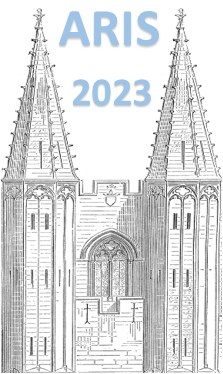Présidents de session
Friday: plenary 16
- Maria J G. Borge (ISOLDE-CERN)
Friday: plenary 17
- Yuhu Zhang (IMP-Lanzhou)
In a simple picture, nuclei in the vicinity of double magic isotopes are of great interest from both experimental and theoretical points of view. Such nuclei have a spherical shape and the excitations-energy spectrum is dominated by single-particle excitation. This simple approach may need to be revised for nuclei that are significantly off the stability path on the neutron-rich side. The...
The intentional incorporation of foreign atoms in semiconductors, with the aim to realize new and/or novel functionalities with potential applications in optoelectronic and spintronic devices, gives rise to structural changes that profoundly affect their electronic, magnetic, and optical properties. Consequently, information on material properties and on dynamic processes such as dopants...
The MEDICIS facility is a unique facility located at CERN dedicated to the production of non-conventional radionuclides for research and development in medical imaging, diagnostics and radiation therapy. Located in a laboratory equipped to safely handle unsealed radioactive samples, it comprises a dedicated isotope separator beam line, a target irradiation station at the 1.4 GeV Proton...
High-energy nuclear collisions are conducted in the world’s largest accelerators, the BNL RHIC and the CERN LHC, to characterize the hot phase of strong-interaction matter, the quark-gluon plasma. Following two decades of phenomenological studies and the availability of data from several different species, a picture has been established according to which high-energy nuclear scattering works...
The SCRIT (Self-Confining RI Ion Target) electron scattering facility [1] was constructed to realize electron scattering from short-lived unstable nuclei at RIKEN in Japan. Electron scattering is one of the most powerful tools for structure studies of atomic nuclei because of the well-understood mechanism of electromagnetic interaction. It has, however, never been applied to short-lived...
The first experiment performed at GANIL (Grand Accélérateur National d'Ions Lourds) was scheduled 40 years ago to study the reactions induced by a 44 MeV/u Ar beam on Ni and Au targets through the mass, charge and energy distributions of the fragments. The projectile fragmentation was found to be the dominant process at this intermediate energy and this pioneer work paved the way to the...

